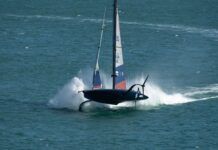
What matters most, our testing confirms, is not so much which brand of pink stuff you choose, but how you use it. Even the best product, mixed with too much water left in the line, results in a blend with unknown and perhaps unsatisfactory performance. While this may not be critical in North Carolina, sailors in Wisconsin need to get it right.
There is only one way to do that; measure the glycol as it comes out the other end of the plumbing. A $10 hydrometer from the local auto-parts store will do this. You have to collect a suitable volume in a cup, and if there is any oil (which floats) or dirt (which sinks), the reading will be affected. Remember to first check the calibration with water; if its off, buy a new one. In the end, you can guess based on color.
Or you can buy a tool that will last a lifetime, can be calibrated (small hidden screw on the bottom side) to read within 1 degree of the true freeze point of either PG or EG, using only a few drops, and will even read the state-of-charge on your batterys wet cells. We are speaking of the pocket refractometer, which looks like a small spotting scope.
In addition to changing the density of water, glycols, alcohols, and acid affect the way light is bent, and a refractometer can measure this change. To operate it, the user places a few drops of the target liquid on the prism, closes the cover, looks in the eye piece, and sees a sharp line that can be read in seconds
Pocket refractometers sell for $75 to $150 through many online auto-parts retailers.







































